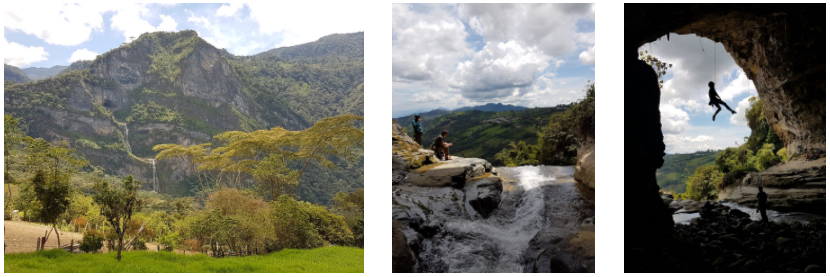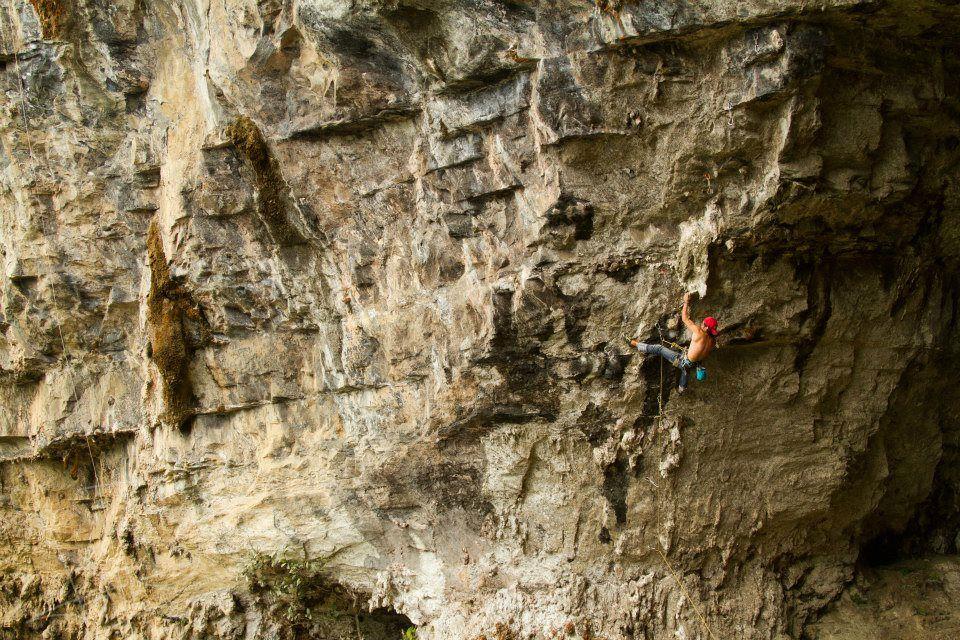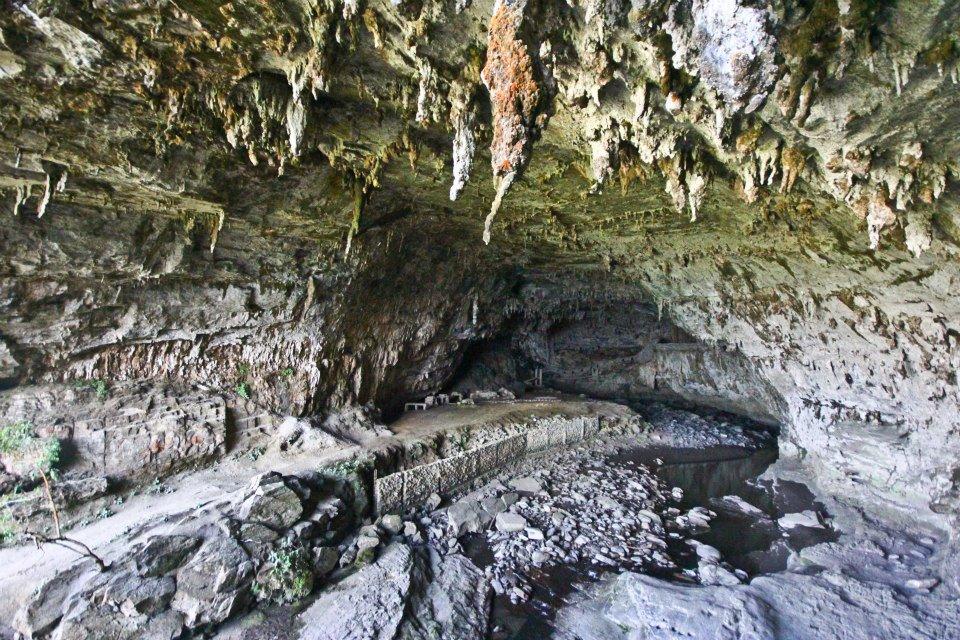Over the past few decades, Colombia’s reputation has drastically changed. Tourists who were previously deterred by civil war and violence are now flocking to the country for its vibrant culture, myriad landscapes, and warm, welcoming people. As the country embraces its status as a backpacker’s paradise, the Colombian climbing scene is quickly expanding. The community is small, intimate, and motivated. Some classic areas such as Suesca near Bogotá have been around since the 1980’s. However, if you’re up for an adventure, there are newer and more exhilarating climbing spots further off the normal tourist circuit. I lived in Colombia for over 3 years, and as a curious traveler, voyaged to many distant corners of the country. It’s important to know that in Colombia, there is always a way to get to where you want to go, but sometimes you must improvise. Combinations of nearly every imaginable mode of transportation have led me to some truly spectacular places. Florián is one of those.
Florián is located in the province of Santander, a mountainous region that is becoming popular for adventure sports. Once you are in Santander, check out San Gil for extreme sports and La Mojarra whose pink-orange sandstone walls offer more fantastic climbing. While these places are relatively easy to access, Florián takes a little more effort – however, it is well worth the travel time. Word of mouth and the dedicated climbing community put it on the map in the early 2010’s. Climber and outdoor guide Miguel Angel Garcia opened many of the routes in the area, with the help of other Colombian climbers including Gabriel Rubiano. Locals have also contributed by sharing information about rock formations and by welcoming climbers to their land.

Welcome to the jungle
The town boasts a view of a steep, rocky mountain with a cascading waterfall that drops hundreds of meters to the valley below. The river that carved its way through the mountain created a cave called Las Ventanas de Tisquizoque (Ventana is Spanish for window). From high inside the cave, one peers out through this window to see the town and Andean jungle – a truly remarkable sight. The inside of this cave contains high-quality, heavily-featured limestone routes that start low on the walls and reach the high, overhanging ceiling. Pull hard on small stalactites and power through a couple of crux moves to reach the chains on Bienvenidos a la Fiesta, a classic 20m 7C. Next to that is a shorter, but equally entertaining 7A+ called Flower Power. You can combine the two routes to create Flower Party, an entertaining pump-fest that goes at 7B. El Cacique (6C) is on the opposite side of the cave, and one of Florián’s most iconic routes. Start by scaling a column and then hug massive stalactites that dangle from the ceiling. Make sure to look out the window and appreciate the green, mountainous landscape before letting your belayer lower you. Las Ventanas are undoubtedly the biggest attraction in the area, given the surreal setting and indescribable views. If you’re lucky, you may even get a nice breeze to help you stick to the steep walls.
There are around 15 routes in Las Ventanas, ranging from 6C to 8A+/8B, but don’t let the hard grades dissuade you. There are easier routes in the sector called El Portón, with around 20 routes on vertical walls that start at 6A. The rock is good quality limestone and, while El Portón doesn’t have the same views as Las Ventanas, the climbing is still varied and entertaining. Other sectors in the area include La Guaca (routes up to 35m), La Cueva del Índio (low, but massively overhung routes) and La Catedral. In total, Florián has about 50 routes, more than enough to keep you busy for a few weeks.
What gear you need
Florián is exclusively a sport climbing destination, so there’s no need to bring your full rack. Twenty draws and a 70m rope will get you up any route. In all sectors, the bolts are shiny and new and you won’t find any surprise runouts. Remember to bring a helmet! Many routes are new, and that means rock falls are possible despite the hard limestone. Headlamps are also important, as the cave can be quite dark in cloudy weather. Another word of caution: respect the warning signs at the edge of the cave, as the river can rise in the rain and the rocks can be slippery. Don’t cross the water if it’s high. True story: the local police warned us that people have been swept to their doom in selfie-related incidents.
Weather in the area is quite mild compared to what you might expect. Florián sits at 1.700m in elevation, so temperatures are usually around 21 degrees during the day and 15 at night. You might anticipate more rain between late September and early December and again from March to May, but it’s hard predict and best to be prepared for a surprise storm. Best time of the year to visit is in the months with lower chance for rain.
Getting there
Getting to Florián is a little complicated, but manageable. If you can’t find a local climber with an extra spot in their car, buses are your only option. First, you must get to a town called Puente Nacional. From Bogotá, look for the bus company La Reina. Buses leave from the Salitre terminal in the western part of the city, then pass through Terminal Norte in the north. You can choose either of these bus stations. Once in Puente Nacional, take a small bus or jeep to Florián. Ricaurte is the company that runs these trips, and they charge COP$12.000 (€3,15) for the 2,5-3 hour journey. I recommend sitting near the front, where the bumps in the unpaved road won’t feel so severe.
For quick access to the rocks, stay at Refugio Munay. It’s a hostel/campsite 4km from the town that is run by Miguel Garcia, Gabriel Rubiano, and Juliana Echeverry, three climbers who have developed much of the scene in Florián. They offer platforms for camping and have a couple of beds if you forgot your tent. The town itself has one or two small hotels where you can stay, and a few tasty restaurants. On rest days, ask about options for hiking, caving, swimming, bird watching, or mountain biking. I’d also highly recommend finding a place in town to play tejo, a national game in Colombia best enjoyed with beer-in-hand. At the time of writing, a complete official guidebook is being finished that will include the areas previously listed. Currently, you must ask around for the beta, but it’s quite easy to get once you’ve arrived.
There is huge potential for climbing in Florián. Hard work has been done to explore, establish trails, clean routes, and create access to the crags. However, there are enough caves and walls in the area to support hundreds, if not thousands of routes. In time, Florián could become a major international destination for adventure-seeking climbers.
Colombia is the birthplace of magical realism, a literary concept that incorporates the fantastical and mythical into the reality of our physical world. Florián is a place that fully embodies that idea. Reaching the chains on a demanding line is a satisfaction that all climbers understand. When you combine that feeling with a surreal view of the Andes from a cave high on the mountainside, with water rushing towards the falls below and a sense of isolation only such a remote place can provide, you are filled with a sense of wonderment and, yes, magic.






